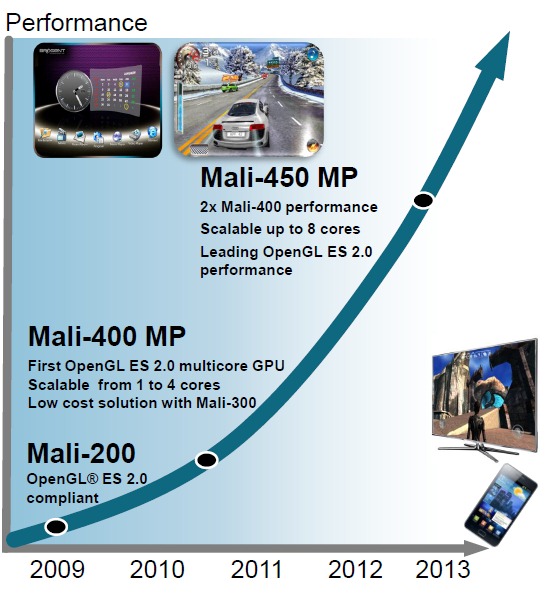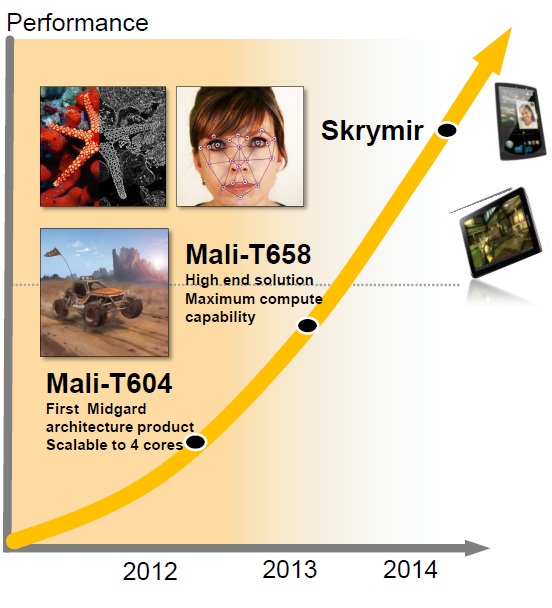EETimes reports that ARM has shown details about its new GPU, the Mali-T450, which offers up to twice the performance of the Mali-400 and can be scaled up to 8 cores, whereas Mali-400 can only be scaled up to 4 cores.
The Mali-450 (codename Tyr) targets entry-level and mid-range mobile devices, and is said to be software compatible with Mali-400. ARM new GPU has also been “tweaked” to provide better performance at the cost of occupying a slightly larger area. The company recommends the use Mali-400 for 1 to 4 cores configuration and Mali-450 for 5 to 8 cores configuration for higher end products.

Contrary to Mali-T604 and Mali-T685 GPU, Mali-450 does not support general purpose computing on GPU (GPGPU).
ARM is also working on a new GPU codenamed Skrymir based on Midgard architecture (Like Mali-T604 & T658) that should be available in 2014.

Source: EETimes

Jean-Luc started CNX Software in 2010 as a part-time endeavor, before quitting his job as a software engineering manager, and starting to write daily news, and reviews full time later in 2011.
Support CNX Software! Donate via cryptocurrencies, become a Patron on Patreon, or purchase goods on Amazon or Aliexpress




